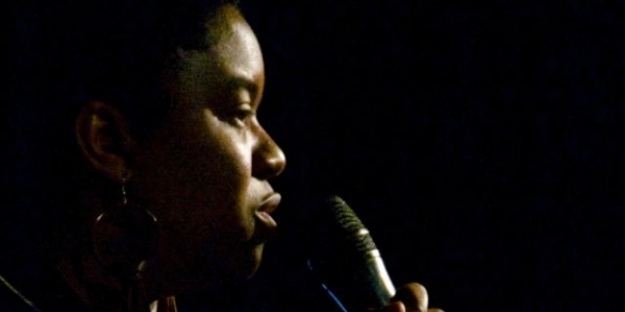Archer will lead a seven-piece jazz ensemble, with writer and slam poet Maxine Beneba Clarke reciting the poem. The Wheeler Centre event will feature some slight revisions of the original performance.
“Two of the band members are based in New York now, so the band has slightly changed but instrumentation is exactly the same,” Archer says. “I’m probably extending the work a little bit and changing a few things to make it work a little bit better. So it’s going to be a slightly improved version, hopefully.”
Ginsberg was a key figure in the beat literary movement. The beat writers’ practices were transgressive and post modernist, and their art was developed concurrently with jazz’s rise to broader popularity. The nonlinear, spiritually expressive capacity of jazz music resonated with the literary ambitions of writers like Ginsberg and Jack Kerouac – Ginsberg actually described Howl’s long-line formatas being founded in the rhythm of bebop.
“I remember reading [Howl] and it just blew me away, so I’ve always been interested in that poem and its relationship to jazz and improvisation,” Archer says. “Ginsberg references jazz as an inspiration for writing it, but also the flow of it… it’s almost like an improvisation. It doesn’t really have a set metre. It doesn’t really abide by regular poetic rules.”
Despite this, Archer’s musical accompaniment isn’t founded in improvisation. It’s not incidental background music, either.
“When I first started the project, I wanted the music to interact quite a lot with the poem,” he says. “Instead of getting a singer for the gig, I wanted a spoken word poet. Maxine’s a poet and a great writer, but she’s not a musician. So that meant, ‘OK I can’t write this as a vocal line. It’s going to be fully a spoken word thing.’ But the challenge is to not just have it as spoken word and accompaniment.
“The first part goes for 12 or 15 minutes or something and there’s not really individual sections within it. It’s just like a stream of consciousness, but I still feel there’s certain areas which have a theme.
“I did a graphic score where every musician has the poem written on their parts, and then they’ve got notes above [telling them] to emphasise certain words. I’ve written it so it actually is really interactive with the spoken word.”
Ginsberg did perform Howl a number of times, but he was adamant that it was a poem and not a piece of performance art. As a written text, it’s lengthy, nebulously structured and disrupts traditional modes of comprehension. The addition of an interactive musical score provides another element to capture the imagination, and opens up new possibilities for finding meaning.
“Because it is like a stream of consciousness, you don’t necessarily have to listen to the words the whole time through and try to capture the music as well,” Archer says. “You don’t have to understand everything the whole way through. There’s snippets of reality and non-reality, and snippets of his life and snippets of his observations of the world he’s living in at that time. Personally I feel like it’s OK to drift between those two things – the music and the words. And then sometimes you can sit back and let it flow over you as a whole thing.”
By Augustus Welby

